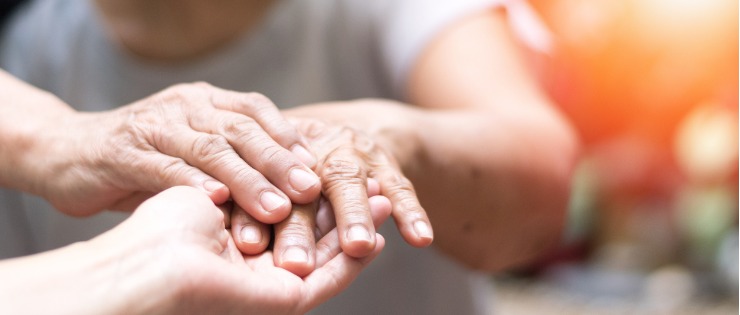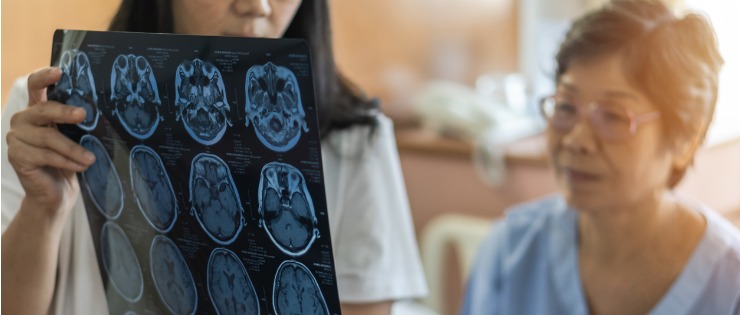
Many adults fear a diagnosis of Parkinson’s Disease (PD). While it's not fatal, its symptoms can be frustrating and painful. The good news is most people find acceptance and quality of life after the initial adjustment. There’s a lot to know about Parkinson’s disease, read on to learn about the symptoms, diagnosis and treatments.
What is Parkinson’s Disease?
Parkinson’s Disease (PD) is a motor system disorder caused by the loss of dopamine-producing brain cells. The progressive disease has symptoms that include trembling in hands, arms, legs, jaw, and face. There can also be rigidity (stiffness) in the limbs and torso, slowing of movement, posture changes and impaired balance. PD is a chronic and progressive disease with no cure.
Nearly one million people live with Parkinson’s in the US and on average 60,000 people are diagnosed with the disease every year. In Australia, approximately 80,000 people are living with Parkinson’s, with one in five people diagnosed before the age of 50.

What are the Main Symptoms of Parkinson’s Disease?
There are four main symptoms of Parkinson’s Disease:
Tremors
The most recognisable symptom of Parkinson’s Disease is tremors. The symptom may start out as a slight shake or tremor of a finger, thumb, hand or chin. Shaking can increase through exercise, stress, fatigue, medication or an injury.

But tremors aren’t present in all cases of Parkinson’s, around 30% of people living with PD won’t experience tremors. Medication can help but if not, some patients undergo Deep Brain Stimulation in surgery.
Bradykinesia
Bradykinesia is a slowing of movement. The slowness can be a reduction in automatic movements, difficulty in initiating movement, slowness in physical actions, abnormal stillness or reduction in facial expression.
The slowness can cause difficulties in performing everyday tasks and can be frustrating because it’s unpredictable.
Poor Balance
Known as postural instability, many people living with PD experience poor balance in the later stages of the disease. They find it difficult to stand upright and steady themselves to prevent falling over. Postural instability can result in a tendency to fall backwards and can contribute to difficulties in walking.

Rigidity
Rigid muscles is a PD symptom that can occur in any part of the body and impacts more than 90% of people with PD. It’s thought reduced dopamine levels disrupt the balance between muscles extending and relaxing. Stiff muscles not only limit the range of movement, but can also be painful. The precursors of rigidity are aching, stiffness and muscle weakness.
Rigidity can begin in one arm then spread to the leg on the same side, followed by the trunk and then the limbs on the other side of the body. Facial muscles are also impacted with reduced expression. It causes difficulty with everyday activities like dressing and cutting food. Everyone is different in terms of the progression of rigidity.
Types of Symptoms of PD
PD symptoms can be grouped into motor and non-motor.
Motor Symptoms
Motor symptoms relate to the main movement symptoms – Bradykinesia, tremors, rigidity and balance problems but also include:
- Dyskinesia (involuntary and uncontrolled movements)
- Parkinson's Gait (stooped posture, shuffling, difficulty turning & transferring)
- Freezing (feeling like their feet are stuck to the floor)
- Problems with eating and swallowing
- Reduced volume when speaking
- Difficulty moving the eyes and focussing, dry eyes
- Restless legs syndrome
- Falls
Non-Motor Symptoms
Non-motor symptoms are varied and include:
What Causes Parkinson’s Disease?
PD occurs when nerve cells in the brain die or become impaired. Studies have shown that people with PD have lost 60-80% or more of the dopamine producing cells in the brain. They may also lose the neurotransmitters that control many automatic functions, such as pulse and blood pressure.
There’s no definite cause of Parkinson’s Disease but the medical profession has identified population groups, risk factors and triggers that make some people more likely to suffer from Parkinson’s Disease.
Population Groups
The following groups of people are more likely to develop Parkinson’s:
Gender – men are one and a half times more likely to develop Parkinson’s than women
Age – most people are diagnosed after the age of 70 but early onset can start before the age of 50
Genetics – approximately 15% of people with Parkinson’s have a family history
Environmental – some toxins and living in rural areas with pesticide exposure are thought to increase risk
Injuries – Concussions and head injuries have also been identified as increasing the risk of developing Parkinson’s in the future
Without a definite cause, there are no proven ways of preventing the disease. Some research has shown aerobic exercise might reduce the risk of getting PD. Another study found a link between consuming caffeine and being more protected from PD, but it’s yet to be proven.
How is Parkinson’s Disease Diagnosed?
There’s no specific test to diagnose Parkinson’s Disease. A doctor will usually diagnose PD through physical examination and various neurological examinations. A CT scan or MRI may be used to rule out other conditions that may have similar symptoms.
Your doctor may suggest a dopamine transporter scan (DaTscan) to reveal a healthy or abnormal dopamine system and support the PD diagnosis.

Stages of Parkinson’s Disease
There are five progressive stages of Parkinson’s Disease. From the early stage of minor symptoms to the final debilitating stage may take 20 years or more in some people while others experience a much quicker progression.
Stage 1
Mild symptoms such as tremors and movements on one side of the body are experienced but don’t cause problems for everyday living. A change in a person’s posture, walk and facial expressions may be noticed.
Stage 2
The symptoms begin to get worse with more tremors, worsening mobility and symptoms that affect both sides of the body. Problems with walking and poor posture are more evident. Daily tasks are more difficult and take longer, but a person can still manage to live independently.
Stage 3
At the mid-stage of the disease, movement slows and a loss of balance can cause falls. While still independent, some tasks such as dressing and eating are more difficult to complete.
Stage 4
Symptoms become severe and limiting. Daily tasks can’t be completed so living alone is not possible. A person may be able to stand but most likely needs a walker to move around. The risk of falls increases in this stage and the next.
Stage 5
Symptoms are now so severe and limiting, that full time care is required. Stiff legs make walking and standing difficult and may need the use of a wheelchair to move around. Hallucinations and delusions may be experienced.
Research has revealed that the earliest sign of Parkinson’s Disease may be the loss of the sense of smell (olfactory dysfunction), constipation and sleep disorders. These non-motor symptoms are helping researchers detect the disease earlier. The motor symptoms may not start for years but by recognising the earliest signs, it’s possible to slow the progression.
What Treatments are Available for Parkinson’s Disease?
Parkinson’s treatments can’t cure the disease but it can slow the progression, improve quality of life and reduce the impact of complications that can shorten life expectancy.
Drug Medications
A range of medications are available to help with the wide range of symptoms association with PD. One medication is used to help with movement symptoms, other drugs help with tremors and stiffness.
Surgery
Surgery is an option for people with PD who no longer respond to medication to help with bradykinesia, rigidity and tremor. Deep brain stimulation surgery involves implanting leads, which have electrodes at the end, into a specific site in the brain depending on symptoms.
Lifestyle
Eating a balanced diet rich in antioxidant foods may prevent oxidative stress which can cause damage to the brain. Foods high in omega-3 fatty acids may also help protect the brain. Fava beans contain levodopa which is a precursor to dopamine and have been included in some Parkinson’s medications.
Exercise is an important part of the treatment plan for PD symptoms, particularly to help with rigidity. By exercising, patients keep their muscles strong and flexible and help alleviate aches and pains that occur with rigid muscles. Exercises that require a person to change tempo and direction regularly are ideal such as walking, dancing, swimming, marching with swinging arms, badminton and table tennis.

Physical therapy can also help improve symptoms and quality of life, particularly in the early stages of the disease. Early detection of Parkinson’s is important to reduce complications that can shorten life expectancy.
If you have noticed any symptoms of Parkinson’s disease, make an appointment to see your doctor.